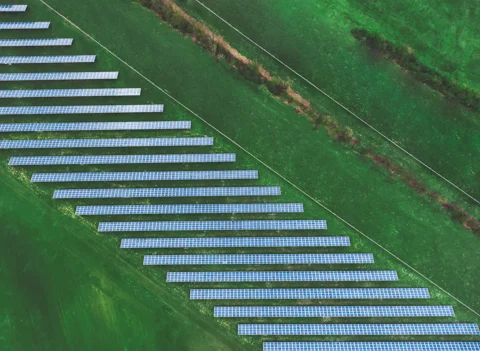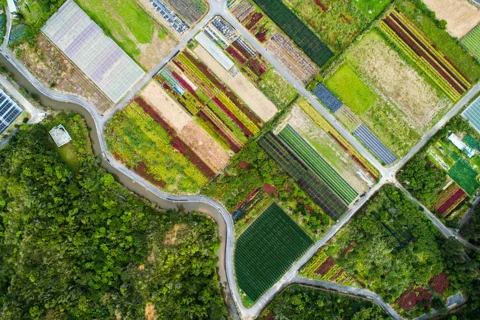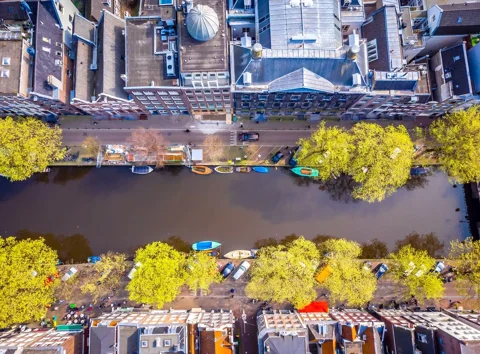APG is investing in over eighty thousand hectares of FSC-certified Chilean production forest. How do you arrive at such an investment? What does the market look like? And how does logging relate to sustainability? Six questions for Vittor Cancian, Senior Portfolio Manager Natural Resources at APG.
Why is APG investing in timberland?
“For an investor with sustainability ambitions, timberland is attractive because responsibly managed forests make a demonstrable contribution to achieving the Sustainable Development Goals. After all, trees absorb CO2 and FSC-certified timberland contributes to biodiversity.”
From a return and risk perspective, timberland is a good investment for a pension fund because the return grows with the general price level. It therefore offers a natural hedge against inflation. Pension funds aim to have pensions grow in line with inflation as much as possible. So, it helps if the return on your investments also rises with the general price level.
Another advantage of timberland is that it adds diversification to your overall investment portfolio. The prices do not move much with developments in financial markets, as is the case with shares or bonds. So, if stock markets give slightly lower returns for a while, this need not apply to timberland investments. These two advantages – a hedge against inflation and diversification - also apply to farmland investments, for that matter.
The beauty of timberland is also that, depending on the market price of wood, you can delay or speed up the decision to cut trees. If in a certain year the price of wood is too low, you can wait for a better time to sell. The advantage is that the trees will continue to grow in the meantime, increasing their economic value. Or you can sell sooner if the price is right.
Would it not be even more sustainable to leave those trees growing in the forest?
“We only invest in production forests. That implies that at some point you also decide to cut the trees down. All our investments in timberland are managed in accordance with the FSC or a comparable quality mark. You only get this certification if you manage forests in a sustainable way. This includes the obligation to plant a new tree for every one that you cut down.
An older tree represents a higher economic value than a young tree. In addition, the CO2 absorption of older trees is flattened because they no longer grow as much. So, from a financial point of view, but also looking at the reduced CO2 absorption, it makes sense to cut down these trees and sell the wood. Young trees, on the other hand, grow fast and need CO2 to do so. Selective felling and replanting therefore keeps the lungs of the earth vital. FSC certification also requires that you take care of biodiversity and pay attention to the social and economic impact on the area in which you operate.”
Wood construction is on the rise. Doesn't that also make a sustainability contribution?
If you start using wood construction as an alternative to concrete and cement, it definitely provides a sustainability advantage. The CO2 absorbed by trees is stored for a long time. The production of concrete and cement, on the other hand, produces a relatively large amount of CO2 emissions. If you really included that in the price, there would be a more financially favorable business case for wood construction.
We are seeing a development to build more with wood. In 2019, the world’s tallest wooden building opened in Norway (the Mjøstårnet in Brumunddal has 18 floors and is 85.4 meters high, ed.). In Amsterdam Oost, Hotel Jakarta is a good example. By 2025, one in five new houses in Amsterdam must be made of wood. But the construction industry is quite conservative. The transition to more wood and less concrete will not happen overnight.
Exactly what kind of wood are we talking about and where is APG investing?
“In our timberland investments, we are dealing primarily with two wood types: softwood – such as, for example, Radiata Pine in Chile, Australia and New Zealand, and Douglas Fir in the US – and hardwood. The latter is primarily Eucalyptus but also other types, like Black Cherry and American oak for the furniture industry. Softwood is used primarily in construction. Eucalyptus wood is also used in the pulp & paper industry.
Will there be more investments like the one in Chile?
“That is our expectation. We are now moving towards a strategy in which we want to expand the current 1.8 billion Euros in timberland and agriculture to 3-5 billion Euros. The rest of the Natural Resources portfolio will gradually be phased out in a responsible way.
To find these kinds of investments, we doubled our team. These new people are based in Hong Kong or New York. It is important that they are close to the market. They have to feel the local dynamics and have their own local network. This is not only important for selecting the right investments, but it is also easier to manage such investments if you are close by. COVID-19 makes this a little more difficult at the moment, but we normally always go and have a look on site if we have our eye on an investment such as in Chile. We want to see the organization, the management and all the other aspects you want to assess to see what we are getting into.”
One of APG's co-investors in the Chilean forest said he had been looking for a promising investment of this size for almost a decade. Is there enough timberland to be found that meets your requirements, to be able to invest those extra billions?
“Yes, but opportunities to invest in timberland and access to the market vary from country to country. Australia and New Zealand, for example, have a well-developed timberland sector, with sufficient scope. Those markets are easily accessible for an investor and offer enough opportunities. In other countries it is a bit more difficult because the markets there are not yet so developed. In countries like that you often have to be more proactive and create a certain structure in order to be able to invest in timberland. Our investment in Chile is a good example. Together with two other parties, we set up a joint venture that acquired this production forest from Arauco.
Chile also has a well-developed timberland sector, but it is mainly owned by a few large companies that supply wood products to the construction industry - for example, MDF or OSB (both pressed from residual wood, ed.). To be assured of sufficient wood for their production, they also want to own the forests. So, they are reluctant to sell them. Arauco is one of those companies. But now the situation arises that these companies need capital to further invest in new production facilities. In order to get that, they sell sections of their forests to large institutional investors - often with the obligation to deliver a certain part of the wood to them annually. At the prevailing market price, of course. A great opportunity, in other words. The scope - this joint venture will be Chile’s third-largest timber producer - and the quality of the FSC forests Arauco have brought to the market are special, so the competition for this transaction was fierce. APG started investing in timberland back in 2007 so we are experienced in this sector by now. The same goes for our partners. We were therefore able to form a strong consortium fairly quickly and strike while the iron was hot.”



